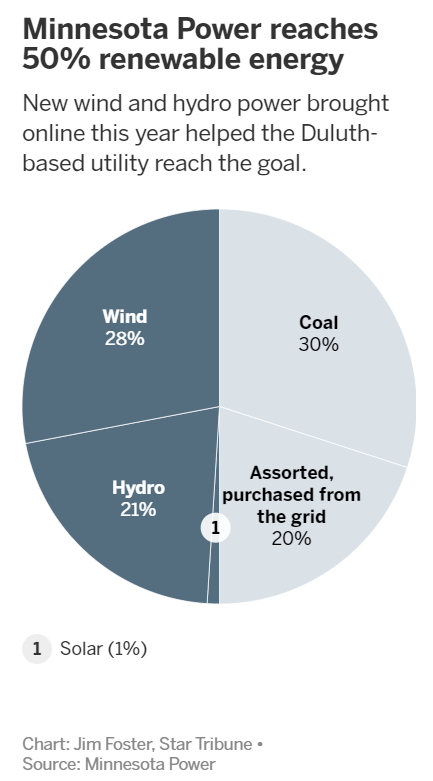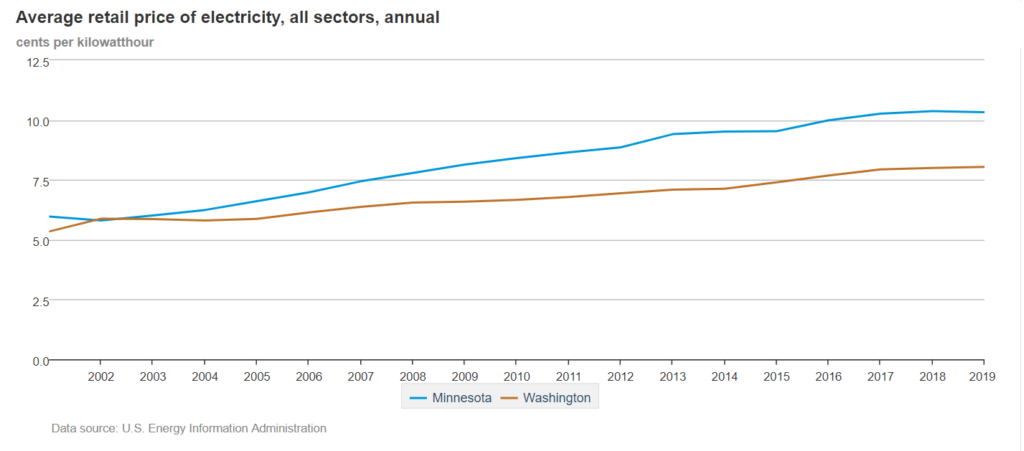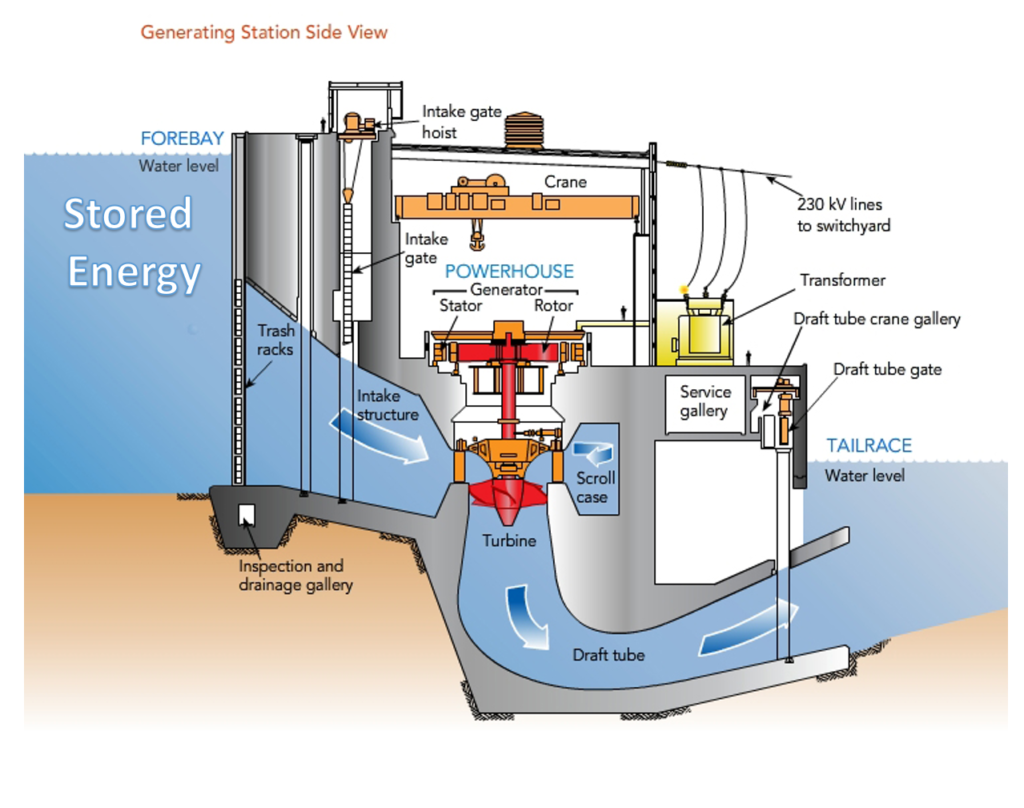Why Minnesota Power’s Electricity Isn’t Actually 50 Percent “Renewable” According to Minnesota’s Renewable Energy Mandates
Minnesota Power (MP), the state’s second-largest investor owned utility, announced on Wednesday that the company had achieved an electric grid powered by 50 percent renewable energy with wind accounting for 28 percent of generation, solar accounting for 1 percent, and hydroelectric power accounting for 21 percent. You can see a pie chart of MP’s generation from the Star Tribune below.

However, according to Minnesota’s renewable energy mandate, the Next Generation Energy Act, Minnesota Power is only at 29 percent renewable, because this poorly-written policy does not allow large hydroelectric power to count as “renewable,” even though electricity generated from large hydroelectric dams are the most “renewable” sources of electricity on the planet.
For example, Washington state gets more than 62 percent of their electricity from large hydroelectric dams, which is why it is one of the greenest grids in the nation. Electricity rates in Washington are also much lower than they are in Minnesota.

Washington has both lower emissions and lower electricity costs because hydroelectric power is a much better way to generate electricity than wind and solar. For one thing, hydroelectric is more reliable and more predictable than wind or solar. Water behind a dam can be stored for later use, whereas wind and solar either require impossibly expensive battery storage, or require natural gas plants to be available as “backup” to generate electricity when the wind isn’t blowing or the sun isn’t shining.

Hydroelectric dams also last much longer than wind turbines and solar panels, which last 20 to 30 years, respectively. For example, the the Grand Coulee dam began operating in 1942, 76 years ago, and is it still the 5th largest producer of electricity in the country. This means the capital costs of the project are largely paid off, and ratepayers are only paying for the continued operation and maintenance of the plant.
If hydroelectric power is clearly superior to wind and solar, why would Minnesota lawmakers have written the renewable energy mandate to exclude so much reliable renewable energy? Unfortunately, the law was written this way because they wanted to create a carveout for wind and solar power, which has had the negative consequences of picking losers over winners.
The result has been a large increase in electricity prices since the NGEA was signed into law.
Changing Minnesota’s renewable energy mandate to allow for large hydroelectric power should be an easy, bipartisan win for lawmakers who care about the environment, but to this day, DFL lawmakers refuse to allow electricity purchased from large hydroelectric dams in Canada to be counted as “carbon free,” because they have an ideological devotion to wind and solar.
For example, Governor Walz said his rationale for his proposed 100 percent carbon free electricity by 2050 mandate was due to the fact that he believes climate change is an “existential crisis.” If he truly believed that, though, there is no way he can defend his refusal to allow large hydro to count as “carbon free,” even though it emits no carbon dioxide.
This is why Walz’s claims that he is “following the science” ring hollow on a variety of issues, ranging from Line 3, to copper-nickel mining, and his administration’s response to COVID-19. If he actually “followed the science,” allowing large hydro to count would be high on his list of priorities.